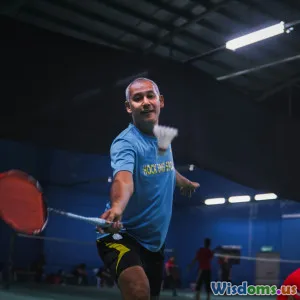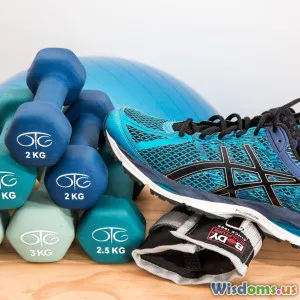
Youth Sports Training Trends Shaping Athlete Performance in 2024
10 min read Explore key youth sports training trends in 2024 revolutionizing athlete performance and development with innovative methods and technology. (0 Reviews)
Youth Sports Training Trends Shaping Athlete Performance in 2024
Youth sports have always played a vital role in building athletic skills, fostering teamwork, and shaping character. However, as we enter 2024, the world of youth sports training is undergoing a remarkable transformation. Coaches, parents, and athletes alike are witnessing a new era where cutting-edge technology, holistic development strategies, and data-driven approaches redefine how young athletes prepare, perform, and thrive. This article dives deep into the most influential youth sports training trends driving athlete performance in 2024.
The Dawn of Personalized, Data-Driven Training Programs
One of the most prominent shifts today is the movement towards hyper-personalized training regimes. Gone are the days when one-size-fits-all drills dominated youth practices. Utilizing wearable technology and advanced analytics, coaches customize workouts to fit each athlete’s unique physiology, biomechanics, and development stage.
For example, companies like WHOOP and Catapult provide wearable devices that track heart rate variability, sleep quality, movement patterns, and recovery metrics. These data points help coaches design day-to-day training loads, avoid overtraining, and optimize performance without risking injury. Harvard Health reports that youth athletes who use such biofeedback-informed training can reduce injury risk by up to 30% while enhancing fitness gains.
Furthermore, online platforms now enable continuous progress tracking. Apps such as CoachMePlus incorporate video analysis and real-time feedback, allowing coaches and athletes to identify technical improvements with unprecedented precision. These tools foster accountability and motivation as each player can see their progress mapped against clear, individualized benchmarks.
Integration of Mental Skills Training and Emotional Wellness
Physical skill alone no longer suffices in cultivating top-tier young athletes. Mental toughness, emotional resilience, and cognitive strategies are increasingly recognized as critical components of performance.
2024 sees widespread adoption of mental conditioning programs adapted from elite sports psychology. Techniques like visualization, mindfulness meditation, and stress management are routinely taught at all development levels. According to a survey by the National Alliance for Youth Sports, over 60% of youth teams now incorporate some form of mental skills training.
Take the example of the National Youth Soccer Organization, which recently mandated workshops dedicated to mental wellness, empowering players to handle pressure, setbacks, and burnout effectively. Coaches often partner with sports psychologists who tailor supportive interventions. For athletes like 15-year-old basketball prodigy Maya Torres, these mental tools have profoundly boosted confidence, focus, and competitive composure.
Focus on Movement Quality and Functional Training Over Volume
Another trend that stands out in 2024 is prioritizing movement quality rather than just repetitive practice volume. Specialists emphasize foundational movement patterns—such as balance, coordination, stability, and mobility—to build robust athleticism that supports long-term success.
Functional training gyms tailored for youth, like MoveStrong Kids and AthleticLab, have gained traction across several countries. These programs use bodyweight exercises, dynamic stretches, and agility circuits designed to enhance neuromuscular control rather than bulk muscle mass.
Scientific research supports this shift too. A 2023 study published in the "Journal of Sports Science & Medicine" found that youth athletes engaging in functional movement training had 25% fewer musculoskeletal injuries compared to those following traditional high-repetition skill drills. This type of correct movement patterning not only improves performance but safeguards young bodies from injury risks inherent in early specialization and overuse.
Embracing Multisport Participation and Delayed Specialization
Echoing decades of research, the knowledge about early sport specialization risks is becoming mainstream in 2024. Coaches and organizations actively promote multisport participation during youth to foster well-rounded athleticism.
Engaging in varied sports develops diverse motor skills, reduces burnout risk, and cultivates a more versatile athletic profile. The renowned American Academy of Pediatrics endorses multisport participation for kids under 14 years to maximize physical and psychological benefits.
For example, a player like Liam Patel who plays soccer, basketball, and track benefits from enhanced agility, cardiovascular endurance, and spatial awareness that transfer across disciplines. Many elite athletes such as NBA star Steve Nash and football legend Patrick Mahomes credit multisport backgrounds during childhood as a key driver of their elite skills.
Youth leagues are redesigning schedules to encourage cross-season sports diversity and reduce calendar conflicts that push early specialization. Parents and coaches acknowledge that long-term athlete development must balance passion with patience for sustainable success.
Technology-Powered Recovery and Injury Prevention
Youth sports year-round calendars can expose athletes to overuse injuries and burnout if not properly managed. Thankfully, innovative technology increasingly rescues young athletes from these risks in 2024.
Cryotherapy chambers, pneumatic compression systems, and vibration platforms are no longer exclusive to professional athletes—they are accessible in many community training centers. These methods accelerate muscle recovery and promote healing after intense sessions.
Additionally, artificial intelligence (AI) platforms analyze injury risk by integrating biomechanical motion capture, historical data, and fatigue markers. For instance, AI software like Sparta Science evaluates jump mechanics and movement asymmetries to flag potential injury predispositions before symptoms manifest.
Incubation of such injury prevention tactics is vital: the Centers for Disease Control and Prevention (CDC) estimates that 30 million children aged 5–18 participate in sports, with about 3.5 million injuries treated in emergency departments annually. Smart interventions not only reduce those numbers but keep young athletes performing consistently.
Enhanced Coach Education and Family Engagement
Modern youth sports also depend heavily on coach expertise and family support systems. As these trends progress, coach education has vastly improved with certifications that include scientific principles, psychology, and nutrition.
A 2023 survey by the National Youth Coaches Association found that over 75% of youth coaches pursued advanced training emphasizing holistic athlete development. This helps create positive, safe, and motivational environments.
Equally, family education programs provide parents with tools to encourage healthy habits and positive reinforcement without imposing excessive pressure. This cooperative approach nurtures balanced athletes who enjoy their sports journey while reaching new performance heights.
Conclusion
As we move through 2024, youth sports training is no longer just about physical drills and skill rehearsal. The landscape now merges innovative technology, scientific insights, mental conditioning, safety protocols, and holistic development philosophies.
The prominent trends of personalized, data-driven training; mental skills integration; emphasis on quality movement; multisport participation; cutting-edge recovery; and comprehensive education create a dynamic ecosystem. This evolving approach benefits athletes by enhancing performance, reducing injury risks, and fostering lifelong passions.
For coaches, parents, and organizations invested in shaping future champions, embracing these trends is imperative. Youth athletes today are equipped with unprecedented resources and knowledge to help them achieve excellence on their terms—healthy, smart, and resilient.
By staying informed and proactive about these 2024 youth sports training trends, we collectively raise the bar for athlete development worldwide.
“The future of youth sports lies in smart training—not just harder training.” – Dr. Alan Reynolds, Sports Scientist
References
- Harvard Health Publishing. "The Science Behind Wearable Fitness Trackers." 2023.
- National Alliance for Youth Sports. "Mental Training in Youth Sports Survey." 2023.
- American Academy of Pediatrics. "Sport Specialization and Its Consequences." 2022.
- Centers for Disease Control and Prevention (CDC). "Sports-Related Injuries Data." 2023.
- Journal of Sports Science & Medicine. "Effectiveness of Functional Training in Youth Athletes." 2023.
- National Youth Coaches Association. "Trends in Coach Education." 2023.
Rate the Post
User Reviews
Other posts in Sports Training & Performance
Popular Posts

















